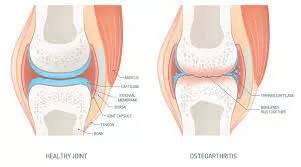Osteoporosis, characterized by low bone density and increased fragility, poses a significant threat to the health and well-being of older individuals, particularly in the case of hip and spine fractures. Dr. Madhusmita Misra, an expert in the field, emphasizes the critical importance of understanding and addressing factors that contribute to optimal bone health.
Bone accrual during adolescence lays the foundation for peak bone mass, which is typically achieved in the third decade of life. This peak bone mass is crucial for maintaining bone health throughout one’s lifetime. However, as individuals age, bone mass begins to decline, making prevention of osteoporosis a paramount concern.
Genetics play a significant role in bone density, but modifiable factors offer avenues for intervention. Mechanical loading through physical activity, maintaining a healthy body weight, and ensuring adequate intake of essential nutrients such as calcium and vitamin D are key strategies for optimizing bone health. Additionally, minimizing the use of medications like glucocorticoids, which can negatively impact bones, is essential.
Certain medical conditions, such as hormonal deficiencies and high cortisol levels, can exacerbate bone loss. Hormone replacement therapy and management of underlying conditions are crucial in preventing osteoporosis and improving bone density over time.
However, once osteoporosis develops, pharmacologic interventions may be necessary to mitigate the condition’s effects. Postmenopausal women and older men are particularly vulnerable and may benefit from medications that promote bone formation or reduce bone loss.
Dr. Misra underscores the importance of a comprehensive approach to bone health, addressing both modifiable and non-modifiable risk factors. By focusing on prevention and early intervention, individuals can reduce their risk of osteoporosis and its associated complications, ultimately leading to improved quality of life in later years.












